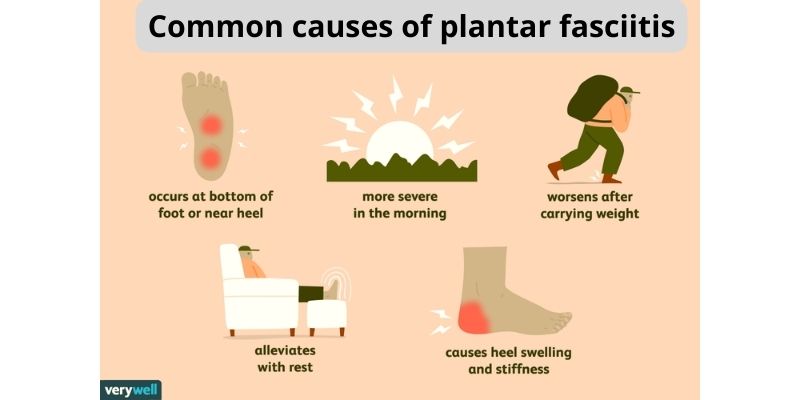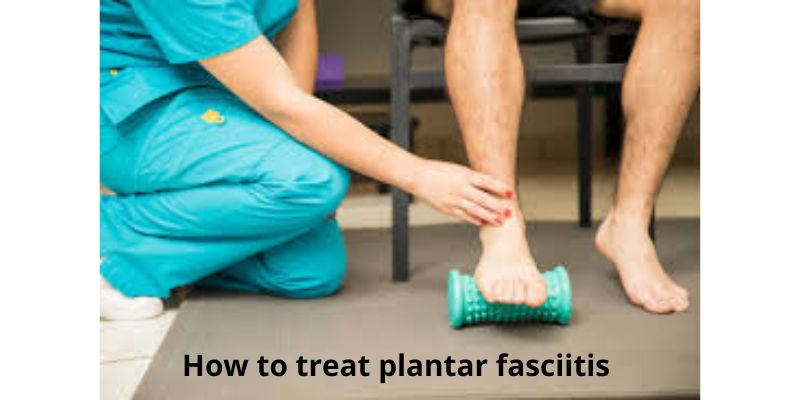How to treat plantar fasciitis at home?
Your doctor diagnoses plantar fasciitis based on your medical history and physical examination. Your doctor will examine your foot and look for any painful spots while doing so. You can locate your pain and figure out where it came from. This article will provides you infomation about Plantr Fasciitis, and how to treat plantar fasciitis at home.
What Is Plantar Fasciitis?

How to treat plantar fasciitis at home?
As we go about our daily lives, the plantar fascia ligaments in our foot assist us absorb shock. These ligaments can become irritated or damaged, resulting in plantar fasciitis, which frequently pains one or both heels. Since it can hurt when walking or applying any other pressure to the foot, this pain can frequently interfere with a person’s regular activities.
And Most sufferers of plantar fasciitis are between the ages of 30 and 60, and they frequently experience a sharp ache with their first morning steps. As you move around, the pain might start to lessen, but if you stand for a long period or get up after sitting for a while, it might return.
Although the precise origin of plantar fasciitis is unknown, runners and overweight people are more likely to experience it. Factors like the following can further raise the risk of injury to the plantar fascia ligaments and the beginning of the condition:
- Increasing amounts of exercise, especially walking and running
- Your choice of footwear
- The structure or contour of your foot
- The surfaces you typically stand, move around on foot, or sprint on
Moreover, Your doctor can examine you and review your medical history to determine whether you suffer from plantar fasciitis or another condition. You may have relief and be able to resume your normal activities if you begin treatment as soon as possible.
Common causes of plantar fasciitis

Straining the area of your foot that links your heel bone to your toes might result in plantar fasciitis. (plantar fascia).
You can be more susceptible to developing plantar fasciitis if you:
- Between the ages of 40 and 60
- Recently began working out on hard surfaces
- Exercise with a tight calf or heel
- Overstretch your foot’s sole during exercise
- Have recently increased their amount of standing, running, or walking
- Have poor shoe support or cushioning
- Extremely overweight.
How to treat plantar fasciitis at home

How to treat plantar fasciitis at home:
You should do:
- If you can, take a break and elevate your foot on a stool.
- Every two to three hours, apply an ice pack or bag of frozen peas to the sore area for up to 20 minutes.
- Put on footwear with padded heels and strong arch support.
- Employ heel cushions or insoles in your shoes.
- Try performing regular, moderate stretches
- Try performing exercises that don’t strain your feet, like swimming
- Use ibuprofen and paracetamol for pain relief
- If you are overweight, strive to lose weight.
You shouldn’t do:
- Ibuprofen shouldn’t be taken for the first 48 hours.
- Avoid prolonged standing or walking.
- Wearing sharp or high heels is not recommended.
- Do not wear backless slippers or flip-flops.
- Avoid wearing bare feet when walking on hard surfaces.
Therapies
How to treat plantar fasciitis at home?
Physical therapy or the use of specialist tools may help to reduce symptoms.
Physical therapy: A physical therapist can teach you exercises to help you strengthen your lower leg muscles while stretching your Achilles tendon and plantar fascia.
Night splints: Wearing a splint that keeps the plantar fascia and Achilles tendon in a lengthened posture overnight to facilitate stretching while you sleep may be advised by your physical therapist or medical professional.
Orthotics: Your doctor can suggest orthotics so that pressure is more evenly distributed throughout your feet.
Walking boot, canes or crutches: One of these may be suggested by your doctor for a brief length of time to prevent you from shifting your foot or from putting all of your weight on it.
Treatment for plantar fasciitis from a foot specialist
How to treat plantar fasciitis at home?
A general practitioner might recommend a physiotherapist or foot expert if your plantar fasciitis does not improve. (podiatrist).
Besides, You can learn exercises from a physiotherapist to help with symptom relief. A podiatrist can offer advice on things like the best shoes to wear and insoles.
In the UK, physiotherapy is provided by the NHS at no cost, but wait times can occasionally be lengthy. You might be able to self-refer, or you might need to see a GP or consultant first, depending on where you reside.
Addition to, The NHS might not provide free podiatry services in every country, and wait times can occasionally be long. Private appointments with a podiatrist or a physiotherapist are also an option.
Conclusion
Plantar fasciitis is a painful condition that affects the plantar fascia, a ligament that extends from your heel to your toes. In most circumstances, a number of noninvasive treatments can address the issue within a few months to a year.
If all other measures have been exhausted and heel pain is significantly affecting your quality of life, you may wish to consider surgery. The ligament is loosened in the procedure, which helps to reduce stress. It is possible to perform this by open surgery or endoscopic surgery. For persistent heel pain, plantar fasciitis surgery, also known as a fasciotomy, is frequently beneficial. If this procedure is a good choice for you, your doctor can assist you decide.














